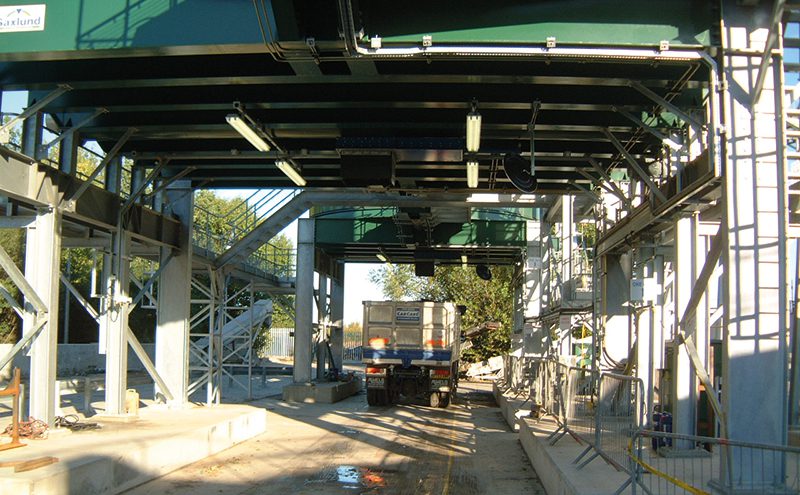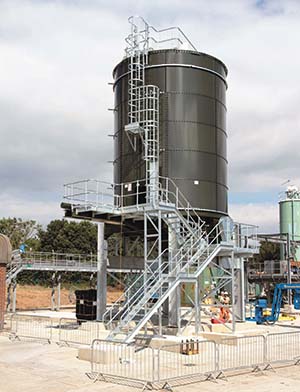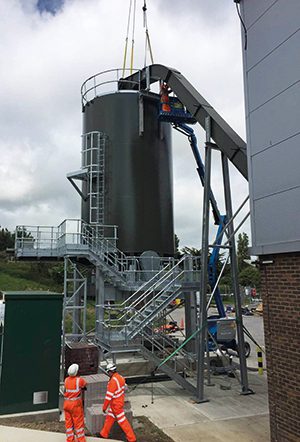Water 2020 requires new thinking on sludge resources and new levels of resilience for sludge handling and transfer systems, says Mark Neal of bulk handling design and engineering specialist Saxlund International

Ofwat’s vision for a new bioresources market, part of the regulator’s Water 2020 targets, brings new opportunities and challenges for water companies and other players who may want to offer processing services.
The plans give sewage sludge a new emphasis as a resource with the potential for quite different models for how it is handled. While the infrastructure landscape is likely to remain largely unchanged at least in the near term, as this new market takes shape we could start to see a degree of outsourcing for sewage sludge processing, new contractual obligations between water companies, some sharing of resources and even potential new entrants as markets develop.
With a probable market value in the region of 780m, according to a 2016 Ofwat Working Group, the new price setting process is designed to incentive the UK’s ten water companies to look for the most efficient options for dealing with sewage sludge bioresources. But there is no obligation to use their own facilities for transportation, treatment, recycling and disposal. This means that where proximity allows, and where there is capacity, some Sludge Treatment Centres (STC) may want to offer processing to neighbouring water companies and vice versa.
So, with deadlines looming, water and sewerage companies (WASCs) are under pressure to put business plans in place and to set out their strategies for bioresources. Drafts for example should be submitted, says Ofwat, by September this year. But in parallel with this companies also need to ensure that existing operations and facilities are sufficiently resilient to deliver on future contractual obligations and that incidents which force closure and therefore stress in other parts of the network are minimised.
The fundamental satellite model of waste water and sludge treatment, with a series of outlying water treatment plants sending dewatered sludge to a central STC for processing, is unlikely to change radically. But over time, process options to squeeze ever more energy out of this precious resource, from anaerobic digestion (AD) to pyrolysis and even incineration with energy recovery, will no doubt increasingly be bolted on to current alternatives. More immediately, WASCs will want to optimise processing options and build in the flexibility to switch processes as demand and their own obligations dictate.

Businesses need to reassure themselves that existing equipment is robust and fit-for-purpose. Breakages, malfunctions and downtime are one thing when you are dealing with a waste by-product and quite another when you are processing a sensitive energy resource – and have formal market structures and contracts hanging over you.
With extensive first-hand experience of designing and installing equipment that provides key links in the sludge treatment process, Saxlund understands that even the most straightforward-looking operations have their vulnerabilities. Whether it is the reception facility at a sludge treatment centre (STC), storage silos and solids pumping solutions, the truck-loading facility from a silo or the downstream materials handling to feed a process, we recognise that these essential links in a chain can have a significant impact on overall performance and efficiency, even halting processes if poorly integrated or maintained.
Direct dealings
If there is a new emphasis on these critical links, we are seeing this reflected in the increased willingness of WASCs to talk directly to original equipment suppliers such as ourselves, partly to improve availability of existing equipment to restore operational efficiency at some sites and to reduce risk. Of course, there are specialist consultancy and project management companies which are experts in their field. But there can be risks when specification, purchasing and maintenance are completely devolved to third parties. It means we can also spot missed opportunities to improve performance.
As a market WASCs have no control over raw material flows. This is a basic challenge, even before considering the ever-longer list of variables on the demand side. In Ofwat’s vision for 2020, three key concepts stand out: resilience, efficiency and innovation. All three will be necessary on the water side of the WASCs’ business, but equally so when it comes to bioresources.
Process options at waste water treatment works (WWTW) need to be calibrated to allow different percentages of dry solids to be produced, in turn allowing sludge to be tankered or to be dewatered and stored for shorter or longer periods, depending on requirements.
But a combination of flexibility, robustness and future-proofing is likewise called for at each STC and each digester, whether or not they are co-located. On top of indigenous sludge, will increasing volumes of imported sludge mean that capacity upgrades are needed? ‘Cross-border’ trading between regional WASCs is likely to become a feature of the new bioresources landscape, and especially cost-efficient STCs, or ones with added-value processing, could attract significantly higher volumes. If this is the case for a given site, what further processing and storage will be required? What reception and truck-loading capacity should be built in?

Shipping sludge
By optimising the dry solids content of sludge, transport costs can be reduced. This is already demonstrated at a wide number of sites employing Saxlund overhead truck loading silos. Where high volumes of sludge are shipped from site to site within the same company, this might mean that processes could be more advantageously located on the same site.
Additionally, the regulator is keen to see the trialling and use of innovative processes, whether these are carried out internally or in conjunction with other businesses. End-use opportunities could include improved quality of products provided to agriculture and working with local AD plants. Ofwat points out that the density of AD plants in the UK, whether commercial/industrial, integrated or farm-based, is now such that to reach one, no mid-to-large-size facility would need to ship sludge more than the 50km that it is already commonly moved.
Of course, on-site assets which run inefficiently can become a liability on a number of levels, not least in terms of the amount of downtime and maintenance they incur. Once they are judged too costly to keep in operation, the WASC has a few options. It can invest in upgraded equipment, scaled to expected demand and run by the company itself. Or there are different models of serviced operation, all the way up to design-build-operate-maintain, where the entire process and its day-to-day running are contracted out to a third party, either on or off-site.
Improved partnerships?
There may be very good reasons why the WASC might opt for a managed or serviced operational model. It may want to avoid the risks involved in direct investment in an evolving market. It may be to do with a lack of project management expertise or manpower. But where the business as a whole is approaching Water 2020 with an eye to its opportunities rather than its risks, such third-party arrangements could turn out to be more of a limitation than a convenience.
If the WASC has the confidence, ambition and resources to manage and operate its own reconfigured facilities, coming direct and early to providers of handling and storage equipment (as businesses are increasingly doing) can yield real benefits. Companies such as ours, with an established track record in the water and sewerage sector, can partner operators in a 360-degree assessment of future needs and opportunities, guiding them towards the optimum specification tailored to those requirements.
Just as importantly, close working with a partner of this kind can help to ensure that expertise is available to keep the operation running at optimum efficiency. Equipment and storage facilities in the area of bioresources can no more depend on reactive maintenance than any other essential technology in other areas of industry. Maintenance must be regularly scheduled, thorough and preventative in scope.
Naturally, WASCs will select different strategies to address the new market opening up in bioresources and may well follow contrasting models across their various sites and parts of their business. But just as giving sludge a new name will not in itself be enough to transform this sector, shiny new installations on their own will not deliver their true potential, unless they are part of a strategic, forward-thinking plan and are not only designed to be fit-for-purpose but kept that way.








